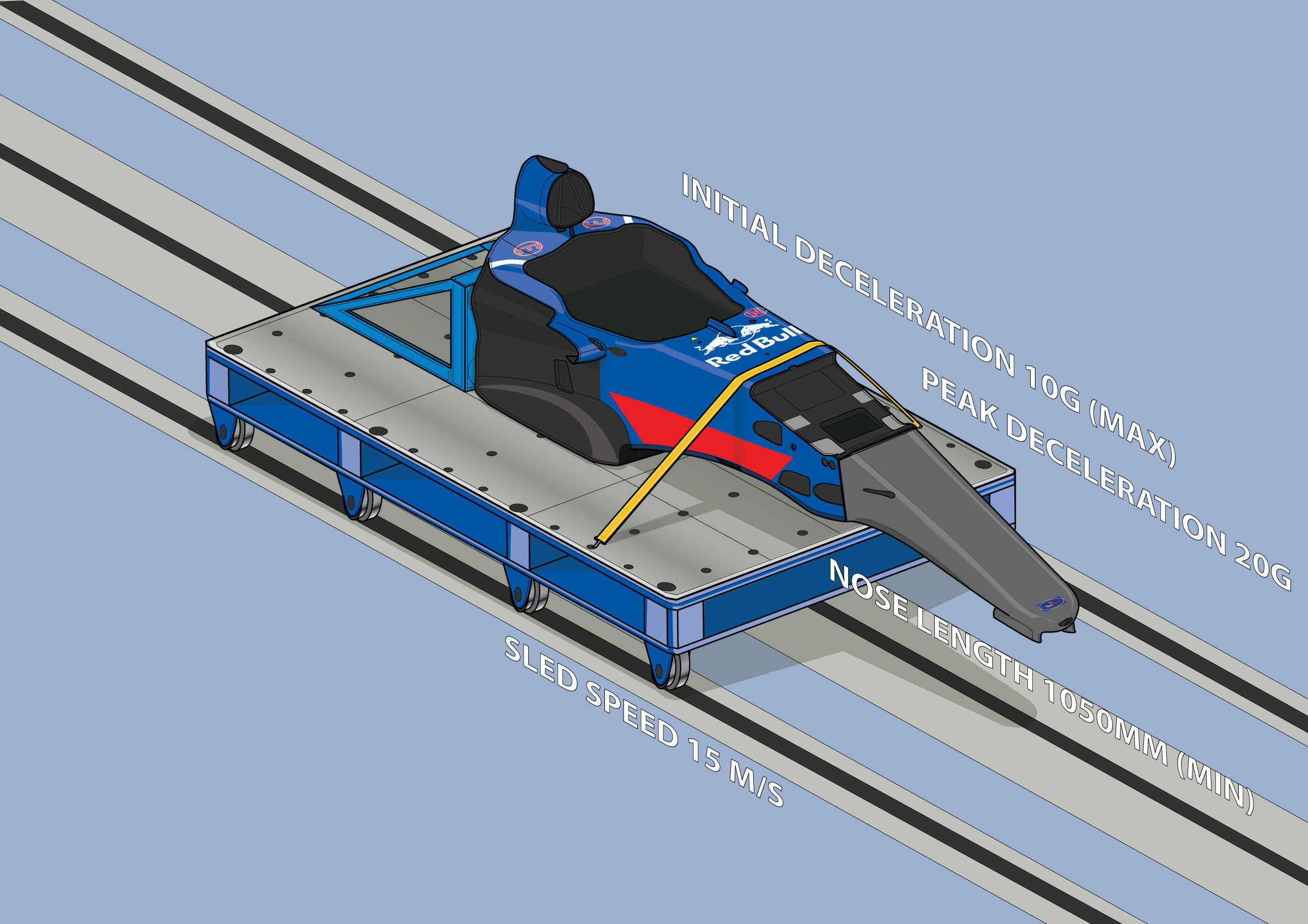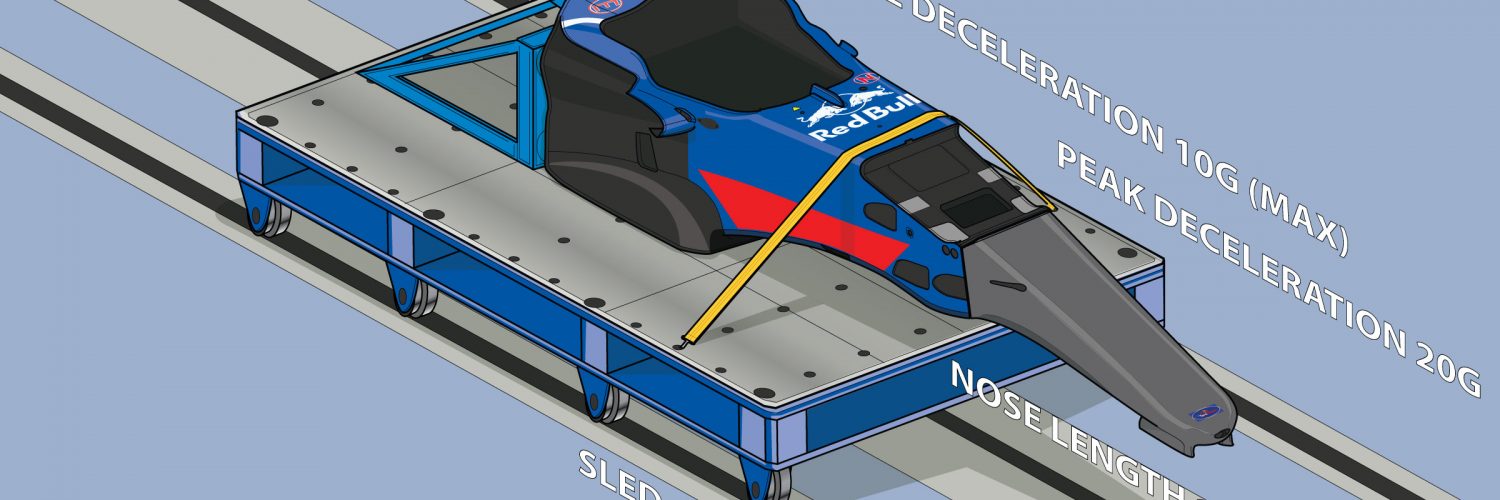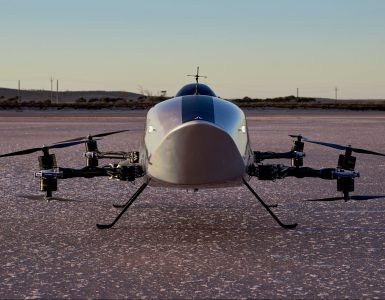With the SportPesa Racing Point Formula One team having recently passed its mandatory FIA-supervised crash test, the team can now focus on the vitally important work of homologation and development of the RP20 ahead of the 2020 season.
As reported by F1i, Racing Point is believed to be the first team to have passed the stringent and important crash test at the Cranfield Impact Centre in Bedfordshire, England and receive official certification. But how does this most important of tests work?
EVOLUTION OF THE CRASH TEST
Prior to 1985, there were fewer safety regulations and no crash tests, but since then every team’s car must pass a series of stringent tests to adhere to the FIA’s regulations. These are now updated frequently, as car design technology constantly evolves and lessons are learned. Indeed, the tragic events of the San Marino Grand Prix weekend in 1994, where Ayrton Senna and Roland Ratzenberger were killed, as well as those in Italy, in 2001 and Melbourne in 2002, where marshals lost their lives, all provided vital impetus into Formula 1’s safety movement.
Old #F1 car crash test (Brabham BT50, 1982)https://t.co/NiJ3CVIofl pic.twitter.com/nVwObxCN4O
— F1 in the 2000s 🍨🏎️🧊🍻7⃣ (@CrystalRacing) February 12, 2018
In modern grand prix racing, safety is the paramount concern for everyone involved, from car designers right through to race officials.
There are five dynamic tests comprising of two frontal impact, one side impact, one rear impact and one steering-column impact and a number of static tests to evaluate the ability of the chassis to support the massive forces experienced in a high-speed crash.
For the frontal dynamic test, the chassis is mounted onto a trolley and fired at a solid wall and for the side and rear tests a heavy trolley is run into the chassis at force and a crash test dummy is also used to measure what happens to a driver in extreme deceleration. The dummy’s chest must not exceed 60g for more than 3 milliseconds. The side of the cockpit is also subjected to a 30-tonne load which it must resist with no evidence of structural failure.
Fires in accidents used to be one of the biggest factors in driver fatalities but the fuel tanks are now also subject to stringent load tests and the cell is made of the same rubberised penetration resistant Kevlar material that is used on armoured cars. Thanks to this, the potential of injury due to fire is now almost zero.

FROM CRASH TEST TO THE CIRCUIT
The crash test, of course, provides the vitally important role of best preparing a race car for the trials and tribulations of the gladiatorial arena of the race proper. And, due to the very nature of the sport, crashes in every formula of racing are not uncommon. Following any accident, the car is ideally restored from new spare parts but it’s not unusual practice that a skilled mechanic can mill a new part on a small manual lathe in the garage and composite technicians can also make remarkable repairs to carbon fibre components. Most of the time with a big accident, however, if the component is not available it will have to be flown out on the next flight.
Cars also carry data recorders similar to those used in aircraft and cars also carry these ‘black boxes’. After any serious accident, data is sent to the FIA institute for analysis and several improvements have come about as a result, including new crash tests and innovations such as wheel tethers, the HANS (head and neck support) device that helps support the neck and head from the G-force of a crash and, of course, the new HALO, which was introduced for the 2018 F1 season and is now mandatory in all European open wheel formulae.
It’s very similar to system crash and data loss. With a reliable backup, such as Racing Point uses from tech partner Acronis, data can be restored and systems brought back to life in time for when you need it.
And it’s not just the car that has adapted in accordance for the need for improved safety in F1. Circuit designers such as Hermann Tilke must adhere to strict guidelines such as minimum criteria for the amount of run-off area and types of barriers that must be present. The newest TecPro barriers are now so efficient that they absorb the energy of the car upon impact and displace it along the length of the barrier. All crucial factors in protecting a driver piloting a fully fuelled car at speeds approaching 190mph.




